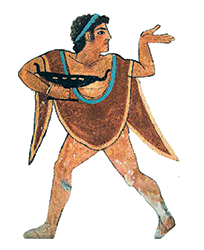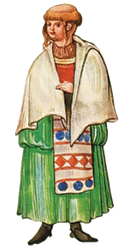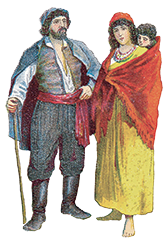ETRUSCANS

Historical Claim
In his Histories, the Greek historian Herodotus describes how ancestors of the Etruscans migrated to Italy from Lydia, a kingdom in western Anatolia, in order to escape famine. Several centuries later another Greek historian, Dionysius of Halicarnassus, argued instead that the Etruscans were “native to the country.”Genetic Evidence
While archaeologists have found little evidence that Lydians migrated into Italy, scientists who mapped the mitochondrial DNA of the residents of former Etruscan towns in Tuscany found them to be more similar genetically to people from Turkey and the Middle East than to Italians outside of Tuscany.
SWEET POTATO

Historical Claim
According to the Rapa Nui of Easter Island, the sweet potato, a crop native to Central and South America, arrived on the island after a Polynesian navigator named Hau Maka dreamed of an unsettled island and sailed east in a canoe stocked with yams and sweet potatoes.Genetic Evidence
Sweet potatoes were likely brought to Rapa Nui by Polynesian settlers, but how the crop arrived in the South Pacific in the first place is still debated. Genetic analysis indicates that the Polynesian variety split from the American one a hundred thousand years ago, meaning it was likely brought by birds or ocean currents rather than humans.
BASQUES

Historical Claim
Renaissance scholars identified Basque as one of seventy-two languages formed after the Tower of Babel fell. According to the sixteenth-century Spanish priest Juan de Mariana, ancient Basques defended “the ancient and common language of the entire province of Spain,” along with “its ancient liberty,” from invading Romans.Genetic Evidence
The language’s precise origins remain unknown, but linguistic research has established that it is unrelated to any Indo-European language, and DNA evidence shows that Basques became genetically isolated from other Iberians more than two thousand years ago.
ARYANS

Historical Claim
In the mid-nineteenth century, the German philologist Max Müller theorized that the progenitors of the Indo-European language family were fair-skinned prehistoric Central Asians called Aryans, one group of which had migrated to Europe while another settled in Iran and India.Genetic Evidence
Many scholars today believe the first Indo-European speakers were pastoral nomads who migrated out of the Central Asian Steppe around the third millennium bc. Genetic evidence suggests that Indo-European speakers across Central Asia, Europe, and South Asia share haplogroup R1a DNA.
ROMA

Historical Claim
In the early fourteenth century, the Byzantine historian Nicephorus Gregoras described seeing “a transient group of people” from Egypt enter Constantinople; the English word Gypsy refers to the same group’s supposed ancestry. In medieval France the Roma were instead known as bohémiens based on a competing theory that the group had originated in the province of Bohemia.Genetic Evidence
In 1782 German linguist Johann Christian Christoph Rüdiger found linguistic similarities between Romani and Hindi, suggesting that the Roma’s ancestors came not from Egypt but South Asia. DNA evidence has strengthened Rüdiger’s hypothesis: one study found that modern Roma are descendants of a single group that left northwestern India around 1,500 years ago.
BLACK DEATH

Historical Claim
In 1348 the University of Paris’ medical faculty issued a report on the origins of the bubonic plague suggesting that the alignment of Saturn, Jupiter, and Mars on March 20, 1345, had created a dangerous atmospheric imbalance, which resulted in a “deadly corruption of the air around us.”Genetic Evidence
Generations of scholars have assumed the Black Death spread across Eurasia in the span of a few decades, but in a 2020 study of genetic evidence and recently translated medieval texts, historian Monica Green argues that the same plague had ravaged Mongolia at least a century before it first appeared in Europe.
